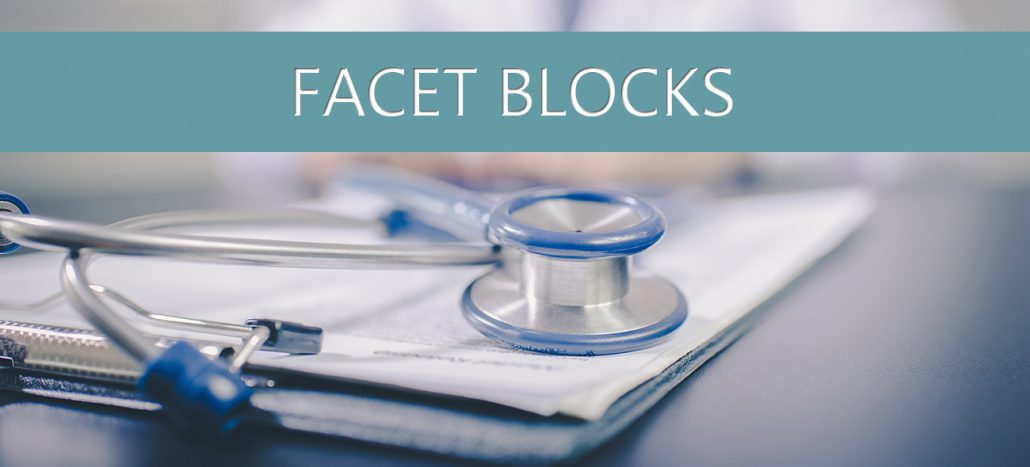Facet Blocks
Description
A facet block is an injection of local anesthetic and steroid into a joint in the spine. You may require multiple injections depending upon how many joints are involved. Facet blocks are typically ordered for patients who have pain primarily in their back coming from arthritic changes in the facet joints or for mechanical low back pain. A facet block may be therapeutic and/or diagnostic. One of three things may happen. 1. The pain does not go away – which means that the pain is probably not coming from the blocked facet joints – this has diagnostic value. 2. The pain goes away and stays away for a few hours but the original pain comes back and doesn’t get better again. This would mean the block was also of diagnostic value -the pain is probably coming from the joints, but the steroid was not of benefit. 3. The pain goes away after the block, the pain may come back later that day, but then the pain gets better again over the next few days. This means that the block was of therapeutic value – the steroid had a long lasting effect on the pain. If you get good, lasting benefit from the injections, the block may be repeated. If you get good, short-term benefit another procedure may be done.
Note: The procedure cannot be performed if you have an active infection, flu, cold, fever, very high blood pressure or if you are on blood thinners. Please make your doctor aware of any of these conditions. This is for your safety!
Risks of the procedure
As with most procedures there is a remote risk of bleeding, infection, nerve injury, or allergic reaction to the medications used. Some short-term side effects may occur. If local anesthetic spreads to nearby nerves you may have weakness or numbness that can last for several hours. If this happens you may have to stay in the Ambulatory Surgery Center until this resolves. You may have increased pain for a few days after the injection, including localized pain at the injection site. Diabetics may have short-term elevation of blood sugars. People prone to fluid retention may have increased fluid retention for 1-2 weeks. Most people say the stinging/burning of the numbing medicine is the most uncomfortable part of the procedure though every person’s response to any procedure is individual.
The procedure
After signing a consent form and checking your vital signs and starting an IV if applicable the procedure will be done in the fluoroscopy (x-ray) room with you lying on your stomach. The back is then cleansed with an antiseptic soap. Sterile drapes are placed. The skin is anesthetized (numbed) with a local anesthetic. This is felt as a stinging or burning sensation. Using x-ray guidance, needles are then advanced to the appropriate locations. Once the needles are in the proper location local anesthetic with or without steroid is injected through the needles and the needles are removed. Your skin will be cleansed and bandages will be applied. (The bandages can be removed on the next morning). Your blood pressure will be checked and you will be discharged to leave with your ride after M.D. authorizes discharge
After the procedure
Your back pain may be improved immediately after the injection from the local anesthetic. It is important to keep track of how you feel for the remainder of the day. The steroid, when used, takes two or three days to have on effect in most people and peaks in about two weeks. Some local tenderness may be experienced for a couple of days after the injection. Using an ice pack three or four times a day will help this. You may take your usual pain medications as well after the injection. It is important that you keep track of the amount of pain relief you received as well as how long the pain relief lasted.
Restrictions
You may not drive for the remainder of the day after your procedure. It is best for an adult to be present to drive you home or to go with you in a taxi or on public transportation. This is for your safety.
No heat is to be used in the injected areas for the remainder of the day.
No tub bath or soaking in water (i.e. pool, jacuzzi, etc.) for the remainder of the day.
You may take your medications with a sip of water but do not eat for six hours before your procedure. Please follow the above instructions unless told differently by your doctor.
Notify your doctor
If you experience severe back pain, new numbness or weakness of your legs, or signs of infection in the area of the injection, you should call your doctor at: 301-530-7303 or go to the nearest emergency room.

